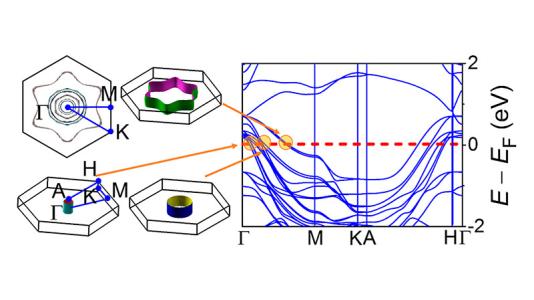
Scientific Achievement
Using a unique CuO in NaSex flux, we discovered the new 2D compound NaCu4Se4 that exhibits a high hole mobility of ~808 cm2V-1s-1 and a nonsaturating linear MR ~1400% at 9 T.
Significance and Impact
Because NaCu4Se4, does not have apparent Dirac points or the typical features of materials with nonsaturating MR, its very existence implies new mechanisms to these exotic effects and should contribute to a deeper understanding of how they can arise.
Research Details
- The need of CuO is crucial to form NaCu4Se4.
- X-ray photoelectron spectroscopy demonstrates the formula is (Na+)(Cu+)4(Se2-)(Se-)(Se2)2- with mixed valency on Se.
- First-principles calculations suggest multiple electronic bands crossing the Fermi level and the density of states around it composed of Cu-d and Se-p orbitals.
DOI: 10.1021/jacs.8b11911
Argonne National Laboratory seeks solutions to pressing national problems in science and technology. The nation’s first national laboratory, Argonne conducts leading-edge basic and applied scientific research in virtually every scientific discipline. Argonne researchers work closely with researchers from hundreds of companies, universities, and federal, state and municipal agencies to help them solve their specific problems, advance America’s scientific leadership and prepare the nation for a better future. With employees from more than 60 nations, Argonne is managed by UChicago Argonne, LLC for the U.S. Department of Energy’s Office of Science.
The U.S. Department of Energy’s Office of Science is the single largest supporter of basic research in the physical sciences in the United States and is working to address some of the most pressing challenges of our time. For more information, visit https://energy.gov/science.